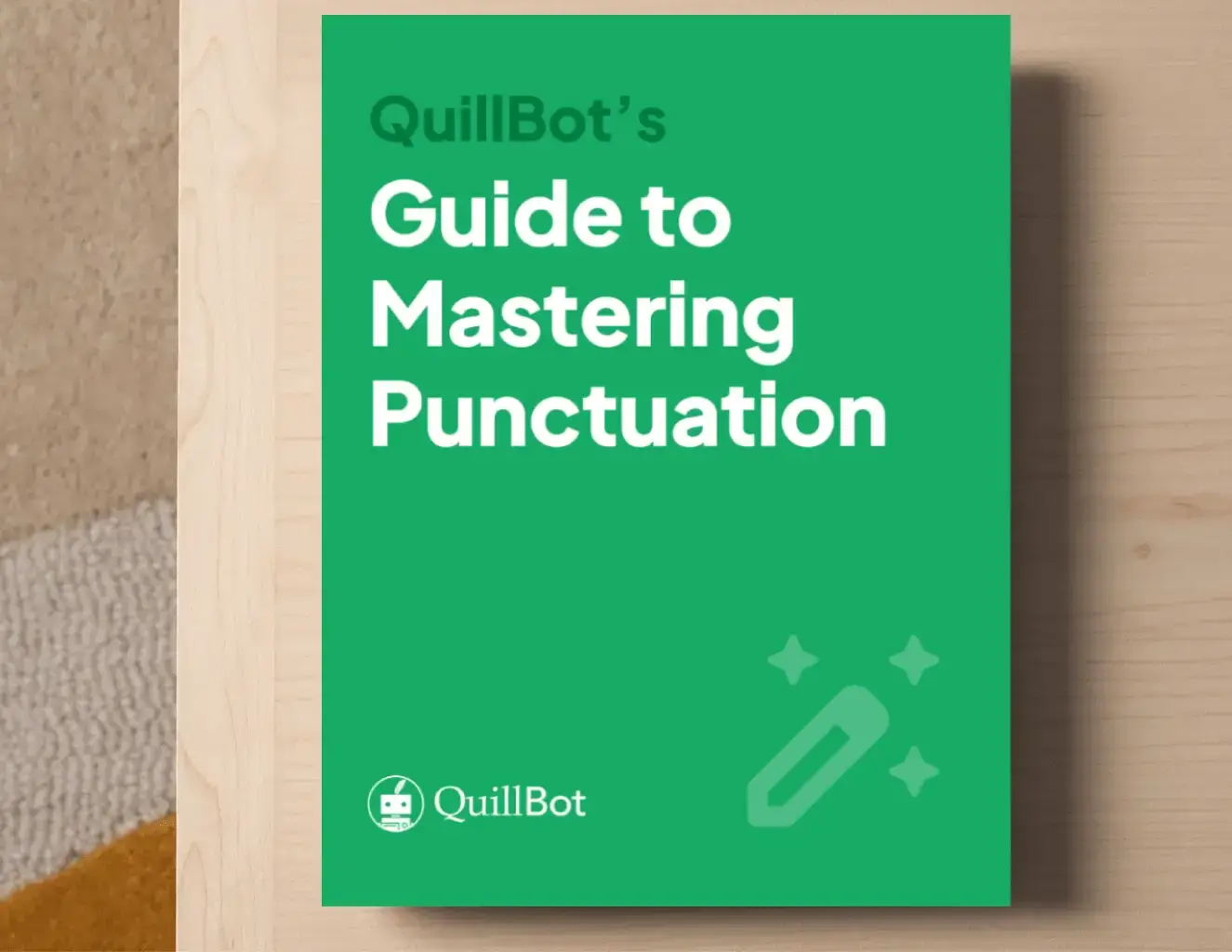How to Revise | Revising Process in Academic Writing
Knowing how to revise your academic writing will help you produce clearer, more cohesive, and more persuasive texts. The revision stage of the writing process involves stepping back to evaluate the bigger picture and consider elements such as the logical flow of your arguments, the consistency of your thesis, and the clarity of your ideas.
QuillBot’s free AI writer can help you identify potential changes to implement when revising your texts.
Revising meaning
In the context of academic writing, such as research papers, essays, and literature reviews, revising typically means rethinking and reworking a draft to improve higher-level elements rather than sentence-level details, sometimes in response to feedback from a peer or teacher.
This may include refining the thesis of your argument (the main point you’re trying to make), reorganizing the structure, or removing sentences or paragraphs to ensure that you’re not straying from the question, for example.
Revising vs editing
In the context of writing a text for academic purposes, editing typically refers to correcting mechanical errors (e.g., inserting a missing Oxford comma) or making other sentence-level adjustments (e.g., rephrasing part of a sentence for clarity or conciseness).
Revising, or the revision stage, on the other hand, involves taking a global view and making higher-level changes to a draft. This might include modifying your thesis statement to reflect how your argument evolved during the writing process, finding stronger evidence (like a better quote) to support a point you identify as particularly important, or adding a paragraph to address a counterargument.
As solar energy becomes more affordable, it is likely to play an important role in addressing global energy challenges.
Revised thesis statement to reflect a shift in scope, complexity, and focus:
The rise of affordable solar energy offers major benefits, but it also creates challenges for grid systems and energy equity, especially for lower-income communities.
The purpose of including a specific revising stage in your writing process is to improve the final result by giving yourself the opportunity to reflect on the text as a whole with fresh eyes after some time has passed, without being distracted by looking out for mechanical or stylistic issues.
“Editing” can also refer to working on a text written by someone else, especially with a view to publication. In this context, it may involve making some higher-level changes directly or providing feedback on higher-level aspects for the author to consider in their next draft.
Revising examples
Here are some examples of revisions you might make to an essay draft during the revision stage of the writing process.
- Moving a paragraph to a later point in the essay because it supports a different idea more effectively there
- Removing a paragraph that no longer fits because you realize your thesis changed slightly while you were writing the first draft
- Adding a sentence to clarify how a quote supports your point
- Deleting a sentence from the conclusion that restates a relatively minor point
- Reframing a point so it more directly addresses the essay question
- Inserting additional evidence to better support a specific argument
How to revise
These tips will help you approach the revising stage of the writing process more effectively.
1. Leave time
Give yourself a gap between drafting and revising. At the very least, take a long break away from your desk—overnight is even better. The fresher your eyes, the better your perspective.
2. Don’t edit
Avoid getting bogged down in editing details at the revision stage, like the correct punctuation for a website citation in Chicago style or deciding whether you need a comma before “as well as.” Keep your focus on the bigger picture. Are you staying on track and answering the question? Are you making the key point of each paragraph clearly enough? Do you need more evidence to back up your claims?
3. Stay relevant
Look at each paragraph and identify its main idea. Does it help you answer the question or support your thesis? Is it in the right section, or should you move it?
4. Cut and trim
You may need to add new material, but don’t hesitate to cut what isn’t working. A passage might sound good or represent hours of research, but if it’s weak, off-topic, or unnecessary, your writing will be stronger without it. Think of those deleted parts as steps that helped you develop your thinking rather than wasted time.
5. Knit it together
Does one paragraph lead smoothly into the next? Consider whether you need to do some reordering or make a few of the connections more explicit using a transition word or phrase.
Frequently asked questions about how to revise
- What does exam revision mean?
-
In UK English and some other varieties of English, exam revision means studying in order to prepare for an exam (e.g., “An exam revision timetable will help you stay organized and manage your time effectively”).
In a US context, the words “revision” and revise typically refer to reworking a draft of a piece of writing.
QuillBot’s free AI rewriter can help you rework your texts.
- What is proofreading?
-
Proofreading is the final stage of the text editing process. It focuses on identifying and correcting mechanical errors, such as spelling, punctuation, and formatting issues, as well as ensuring consistency with the relevant style guide.
Proofreading doesn’t typically involve rephrasing sentences, improving word choice, or checking factual accuracy.
Why not use QuillBot’s free Grammar Checker to help you proofread your text?
Cite this Quillbot article
We encourage the use of reliable sources in all types of writing. You can copy and paste the citation or click the "Cite this article" button to automatically add it to our free Citation Generator.
Challenger, T. (2025, October 23). How to Revise | Revising Process in Academic Writing. Quillbot. Retrieved November 18, 2025, from https://quillbot.com/blog/academic-writing/how-to-revise/

